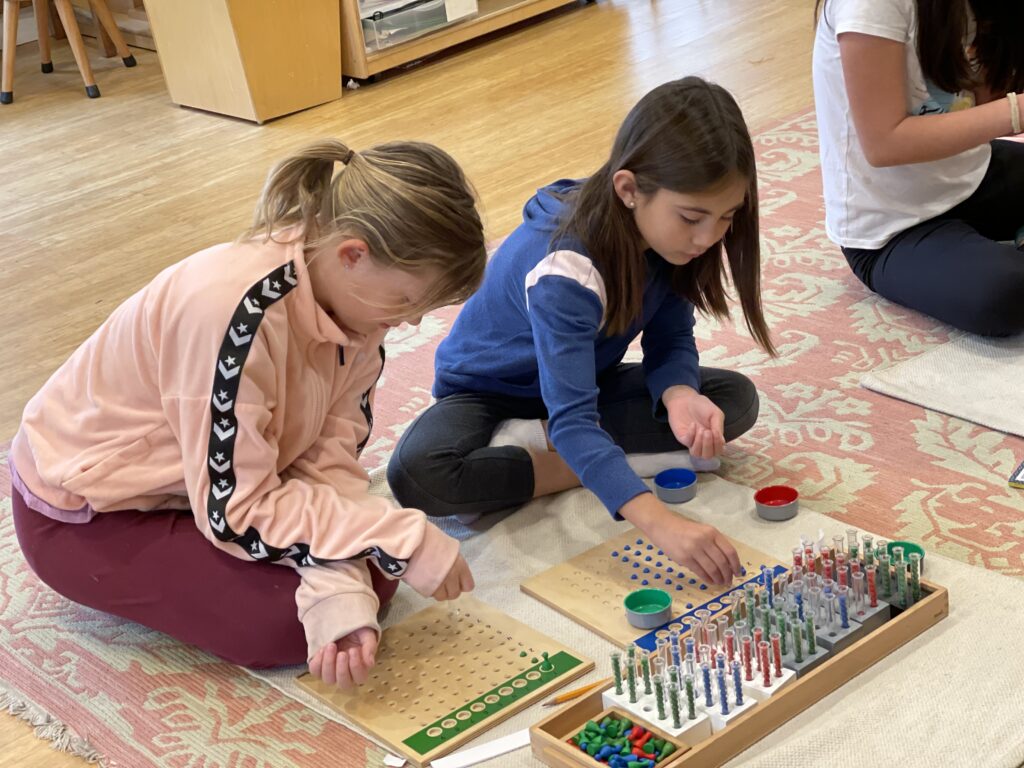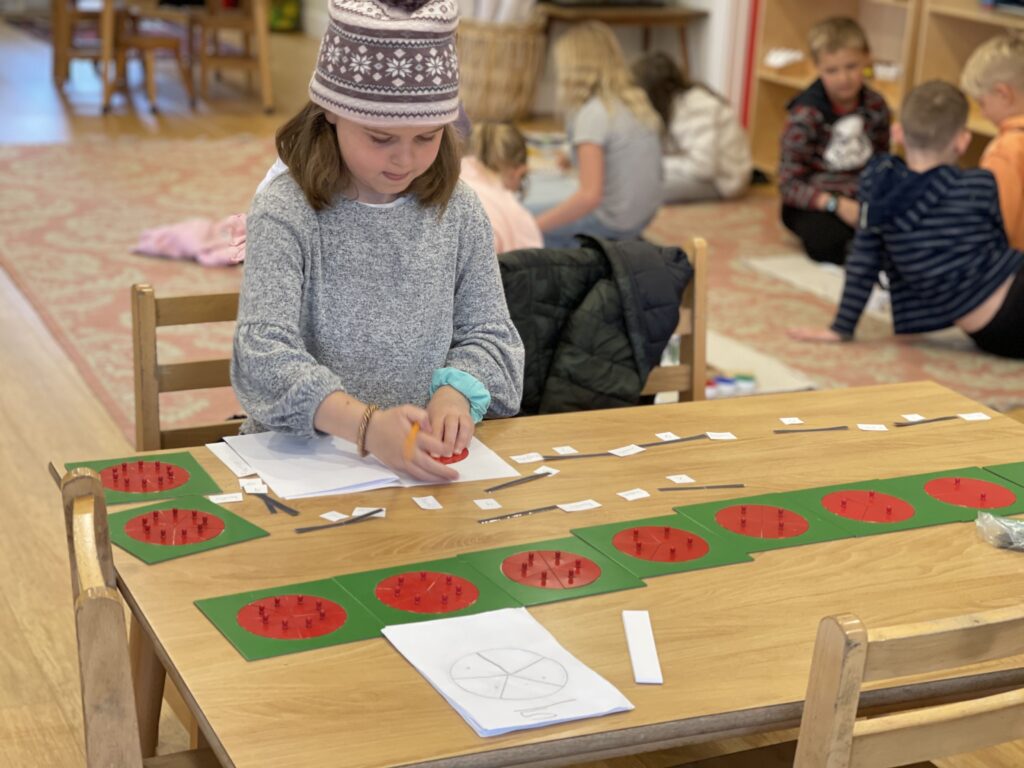I stopped to observe between lessons this morning and was struck by the multitude of different math materials being utilized simultaneously. About half of my class was working on math of some sort.
Math is my favorite subject to teach, which may explain why my students love math (or maybe it’s just the mathematical mind that is an inherent second plane characteristic). It may seem ironic that I love teaching math given the fact that it was my least favorite and most challenging subject all through school. But, that is exactly the reason why it is now my favorite subject. I love teaching Montessori math because I get to teach it in a way that makes sense. I get to show kids that math is real! Math always seemed so abstract to me, even when people tried to explain how it pertained to real life I never got it. I tried to memorize formulas, never understanding the why. Even pictures are not the same as holding a material in your hands and physically seeing how things work.

Through her observations Montessori saw the way that children learn, and she created precise materials for each mathematical process because children learn by doing! During my Montessori training I understood things for the first time – simple things that I’m embarrassed to admit that I just never fully got until I could see it. These are the things that I now teach to first graders. The design of the materials makes it possible for children to understand concepts far beyond their “grade level”. I cringe when I hear people say things like, “Isn’t that a third grade lesson?” Why should a work be confined to a certain grade level when the materials make it accessible to all? That is the beauty of Montessori. We do not teach to grade levels, we follow the child and we give the lesson when they are ready; that may mean that a child in first grade is doing division and multiplying fractions. It may also mean that a third grader is still practicing addition, and it’s possible that the same child could even be doing both.

We give repetition with variety. This means that there are multiple materials for the same concept such as addition or multiplication. In this way children are presented with the same operation in multiple formats so that they do not get bored but are able to practice in different ways. Children work with the materials until they have a concrete understanding of a concept and then move on to abstraction – the point at which they are able to move to pencil and paper with a full understanding of why they “carry the 1”, for example.
I am still in awe of the range of mathematical materials that Montessori offers and love that I get to teach in a way that is real and makes sense. The ability to show rather than tell and the materials that make it possible – even fun – for children to practice independently is a true gift to both me and the children whose self-construction I am able to help facilitate.

